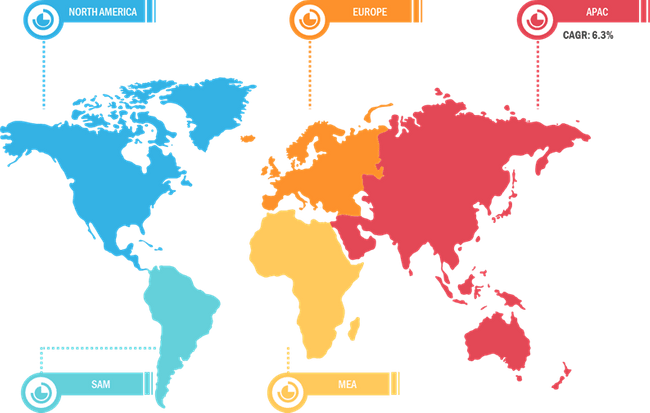Surging Demand for Dairy Products is Driving the Growth of Aseptic Packaging for Food and Beverages Market
According to our latest market study, titled " Aseptic Packaging for Food and Beverages Market Forecast to 2028 – COVID-19 Impact and Global Analysis – by Type (Cartons, Bottles & Cans, Sachets & Pouches, and Others) and Application [Food (Dairy Food; Fruits & Vegetables; Meat, Poultry, & Seafood Products; Processed Food; and Others) and Beverages (Dairy Beverages, Juices, Ready-to-Drink Beverages, and Others)]," the aseptic packaging for food and beverages market is projected to reach US$ 24,782.33 million in 2028 by growing from US$ 17,097.86 million in 2021; it is expected to grow at a CAGR of 5.4% from 2021 to 2028.
Aseptic packaging is the process of packaging sterilized food and beverages in sterilized packages under sterilized environmental conditions. Aseptic packaging increases the shelf life of food and beverages as it inhibits the growth of bacteria and pathogenic microorganisms. Moreover, it reduces the distribution and transportation costs as the aseptically packaged food and beverages can be stored without refrigeration. Furthermore, there is no need to add additional preservatives in the aseptically packaged food and beverages. Aspetic packaging is usually used for packaging dairy products as they are highly perishable at ambient temperature. The rising demand for dairy products such as milk, yogurt, and cheese is driving the growth of aseptic packaging for food and beverages market.
Over the past few years, there has been a significant demand for dairy products, including milk, cheese, butter, and yogurt. According to the United States Department of Agriculture (USDA), dairy exports recorded in August 2021 were 13% higher than that in August 2020, which marked the seventh consecutive month of growth. The rising demand for dairy products is driving the requirement for advanced packaging techniques that increase the shelf life of the products and maintain the product quality. Aseptic packaging is increasingly used for dairy products due to its various benefits, such as extended shelf-life, lower energy costs, and the elimination of required refrigeration during storage and distribution. It is used as a packaging solution for ultra-high temperature (UHT) milk. Aseptic carton bricks are being used as a packaging solution for cheese where the product is packed in liquid stated and is solidified along the process. Thus, the growing demand for dairy products worldwide is driving the growth of aseptic packaging for food and beverages market.
Key players operating in the global aseptic packaging for food and beverages market include Tetra Pak International SA, Sealed Air, Greatview Aseptic Packaging Company, Sidel Group, ECOLEAN AB, Krones AG, Syntegon Technology GmbH (Bosch Packaging Technology), Amcor Group GmbH, IPI S.r.l., and SIG Combibloc Group AG. These players are focusing on product innovation to retain their market share and to expand their market size.
Impact of COVID-19 Pandemic on Aseptic Packaging for Food and Beverages Market
Many sectors faced unprecedented challenges due to the COVID-19 outbreak. The chemicals & materials industry also suffered from severe disruption due to lockdowns, travel bans, border restrictions, and the shutdown of manufacturing units, among other factors. However, the COVID-19 pandemic had a mixed impact on the market. The demand for functional foods and beverages increased significantly owing to rising health and wellness trends, which opened significant opportunities for the aseptic packaging for food and beverages market. The sales of dairy products increased as consumers focused on their health and well-being, which positively impacted the growth of market. Moreover, the demand for processed food and beverages increased as the hygiene concerns of consumers increased significantly as a result of the COVID-19 outbreak. This factor positively influenced the growth of market. Further, the majority of the countries are vaccinated, which is a positive sign for the global market. The manufacturers are also operating at full capacity, which is helping them overcome the demand and supply gaps. These factors are positively driving the growth of the aseptic packaging for food and beverages market.
Aseptic Packaging for Food and Beverages Market Breakdown – by Region

Aseptic Packaging for Food and Beverages Market Report - 2028
Download Free Sample
Aseptic Packaging for Food and Beverages Market Forecast to 2028 - COVID-19 Impact and Global Analysis By Type (Cartons, Bottles & Cans, Sachets & Pouches, and Others) and Application [Food (Dairy Food; Fruits & Vegetables; Meat, Poultry, & Seafood Products; Processed Food; and Others) and Beverages (Dairy Beverages, Juices, Ready-to-Drink Beverages, and Others)]
Aseptic Packaging for Food and Beverages Market Report - 2028
Download Free SampleAseptic Packaging for Food and Beverages Market Forecast to 2028 - COVID-19 Impact and Global Analysis By Type (Cartons, Bottles & Cans, Sachets & Pouches, and Others) and Application [Food (Dairy Food; Fruits & Vegetables; Meat, Poultry, & Seafood Products; Processed Food; and Others) and Beverages (Dairy Beverages, Juices, Ready-to-Drink Beverages, and Others)]
The report segments the aseptic packaging for food and beverages market as follows:
Based on type, the aseptic packaging for food and beverages market is segmented into cartons, bottles & cans, sachets & pouches, and others. Based on application, the aseptic packaging for food and beverages market is segmented into food and beverages. The food segment is further divided into dairy food; fruits & vegetables; meat, poultry & seafood; processed food; and others. The beverages segment is further segmented into dairy beverages, juices, ready-to-drink beverages, and others. Based on geography, the aseptic packaging for food and beverages market is segmented into North America, Europe, Asia Pacific (APAC), the Middle East & Africa (MEA), and South & Central America (SAM).
Contact Us
Phone: +1-646-491-9876
Email Id: sales@theinsightpartners.com